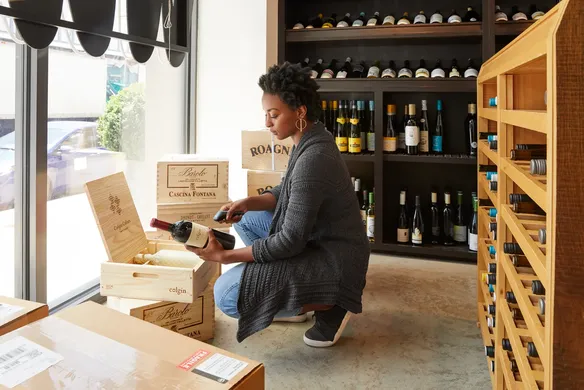Table of contents
We use barcodes every day but don’t think about them much. These black and white bars on the products we buy are a powerful tool that let us check an item’s price, scan it at a self-service register, and know that we’re paying the correct price.
Barcodes offer plenty of benefits to shoppers, but they also help retail stores to run more smoothly. For retailers, barcodes make selling and inventory management faster and more accurate and provide strong oversight of business performance.
Read on for more information about barcodes and how they work.
What is a barcode?
A barcode is a machine-readable image that consists of a series of parallel black and white bars that a barcode scanner can read. Barcodes are applied to products and product packaging to give each item its own unique identifying number. Barcodes are typically used in retail stores and are usually 13 digits long; however, they could also be 8 or 12 digits in length.
What are the main types of barcodes?
There are two main types of barcodes – 1-dimensional (1D) and 2-dimensional (2D) barcodes.
- 1-dimensional (1D) barcodes are a series of black and white bars that store information like a product’s type, size and colour. 1D barcodes are found on the top of universal product codes (UPCs) of product packaging and parcels.
- 2-dimensional (2D) barcodes can hold more complex information than 1-dimensional barcodes. They might communicate aspects including price and inventory levels and could even include a product image. QR (quick response) codes are a type of two-dimensional barcode. They aren’t readable by linear barcode scanners but can be read by smartphones and other image scanners.
What are some benefits of using barcodes?
Barcodes were initially developed to speed up the sales process, but they offer several other business benefits.
- More accurate: With a barcode’s data automatically shared with your POS system, there’s no need for manual data entry and associated errors.
- Supports real-time reporting: Ultra-fast processing gives you a real-time view of product sales and stock levels.
- Simple to use: We’re all familiar with scanning barcodes at self-service checkouts in supermarkets, which means you won’t need to train your employees to use them.
- Enables better inventory management: With a real-time view of what you’re selling and stock on hand, you can manage your inventory more effectively.
- Low cost: It’s easy to generate and print barcode labels with point of sale solutions like Square for Retail. You’ll be able to serve customers faster and save costs due to better inventory management.
What is a barcode scanner?
A barcode scanner (also known as a barcode reader) is a device that captures and decodes a barcode’s information. Barcode scanners have a lens that scans a barcode and a decoder that analyses the barcode’s data. From here, this information is automatically transmitted to a linked point of sale (POS) system to facilitate a transaction.
There are many different types of barcode scanner. Modern solutions like Bluetooth barcode scanners and USB barcode scanners are a popular choice for retailers looking for a reliable, easy to use barcode scanner.
How to connect a barcode scanner to your POS system
The correct way to connect a barcode scanner to your POS system will depend on your barcode scanner and POS setup.
If you’re using Square for Retail, simply plug your USB barcode scanner into the Accessory Hub of your Square Hardware or your Android device using an on-the-go (OTG) adaptor. If you have a Bluetooth barcode scanner, we share detailed setup information on Square Support.
What is a UPC versus a SKU?
The terms UPC and SKU are often used interchangeably, but these retail terms serve different purposes for retailers.
A UPC, or “universal product code”, is a 12-digit code used to identify a product regardless of where it’s sold (hence “universal”). If you buy an identical product from a local store or online from an international company, it will have the same UPC. This means you can use the UPC to look up a product online and see multiple retailers that sell that product.
SKU stands for “stock keeping unit” and is a unique number that a retailer assigns to a product to keep track of sales and inventory. Different retail stores may sell exactly the same product using different SKUs. SKUs are alphanumeric and vary in length. Visit our blog, ‘What is a SKU and how should you use it?’, for a deep dive into the world of SKUs.
What is a QR code and how do they work?
A QR (quick response) code is a type of two-dimensional (2D) barcode. They store information as a series of pixels in a square-shaped grid and can be accessed by digital devices like smartphones. The data stored in a QR code can include website URLs, phone numbers and more.
Visit the Square website for more information about how Square for Retail can help you use barcodes to optimise your retail store’s operations.
![]()











